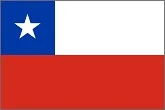Consumer Price Index | |
List
Visualization
?
Consumer price indexes (CPIs) are index numbers that measure changes in the prices of goods and services purchased or otherwise acquired by households, which households use directly, or indirectly, to satisfy their own needs and wants. In practice, most CPIs are calculated as weighted averages of the percentage price changes for a specified set, or "basket", of consumer products, the weights reflecting their relative importance in household consumption in some period. CPIs are widely used to index pensions and social security benefits. CPIs are also used to index other payments, such as interest payments or rents, or the prices of bonds. CPIs are also commonly used as a proxy for the general rate of inflation, even though they measure only consumer inflation. They are used by some governments or central banks to set inflation targets for purposes of monetary policy. The price data collected for CPI purposes can also be used to compile other indices, such as the price indices used to deflate household consumption expenditures in national accounts, or the purchasing power parities used to compare real levels of consumption in different countries.
The OECD collects and validates the data for their member countries, including accession and key partner countries, whereas the IMF takes care of the collection of data for all other countries.
Average: 387,91
Countries: 154
?
Consumer price indexes (CPIs) are index numbers that measure changes in the prices of goods and services purchased or otherwise acquired by households, which households use directly, or indirectly, to satisfy their own needs and wants. In practice, most CPIs are calculated as weighted averages of the percentage price changes for a specified set, or "basket", of consumer products, the weights reflecting their relative importance in household consumption in some period. CPIs are widely used to index pensions and social security benefits. CPIs are also used to index other payments, such as interest payments or rents, or the prices of bonds. CPIs are also commonly used as a proxy for the general rate of inflation, even though they measure only consumer inflation. They are used by some governments or central banks to set inflation targets for purposes of monetary policy. The price data collected for CPI purposes can also be used to compile other indices, such as the price indices used to deflate household consumption expenditures in national accounts, or the purchasing power parities used to compare real levels of consumption in different countries.
The OECD collects and validates the data for their member countries, including accession and key partner countries, whereas the IMF takes care of the collection of data for all other countries.
2010 = 100
Basic data
Change
from
to
Flag
Index
Column
Map
Racechart





























































































































































